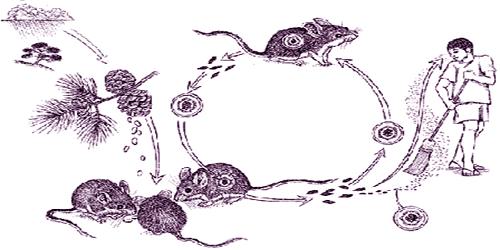Orthoantivirus is a genus of single-stranded, hated, negative-sense RNA viruses in the Hantaviridae family of Bunyavirials. Members of this genus may be called orthoantiviruses or simply Hantavirus. Hantavirus is also known as Orthoantivirus, a disease that spreads from rats. The disease is infected in rats but not the disease. Humans may be infected with hantavirus by contact with rat urine, saliva or feces. Some strains cause potentially fatal diseases in humans, such as hantavirus hemorrhagic fever with renal syndrome (HFRS), or known as hantavirus pulmonary syndrome (HPS), while others were not associated with known human disease. Hantaviruses can cause serious diseases including bleeding and kidney failure. HPS (HCPS) is a rare respiratory illness associated with inhaled aerosolized rodent maestria (urine and feces) contaminated with hantavirus particles.
Hantavirus infections have been fully linked to human contact with rat anus; However, there were reports of human-to-human transmission of the Andes virus in South America between 200 and 2019. The negative-stranded RNA linear genome in the section, the L segment is between 6.8 and 12 kb, the M segment is 3.2 to 4.9 kb and the S segment is between 1 and 3 kb. Encoded for four to six proteins. Some hantaviruses encode an NSs protein in their S section. Pulmonary syndrome was first recognized in the Southwest U.S. in 1993. As of 2017, there have been about 697 U.S. appearances, mostly in the western states. This has also happened in Canada and several Central and South American countries. Hantavirus-induced hemorrhagic fever is two to four weeks in humans before symptoms develop during incubation. Their severity depends on the viral load.
The Hantavirus was named for the Hantan River region of South Korea where the initial outbreak was observed and was isolated in 1976 in Ho Wang Li. The virus is spread by brown Norway rats and by ship rats all over the world. Some cases of hantavirus infection spread by pet rats have occurred in the United States, Canada, and Europe. It’s Bruce Tempest initially called it “Four Corners Disease”, but after Native Americans complained the name was renamed “Sin Nombre Virus” that the name “Four Corner” stigmatized the region. Some evidence suggests that the virus rarely spreads from person to person. Hantavirus infection is becoming more common.













